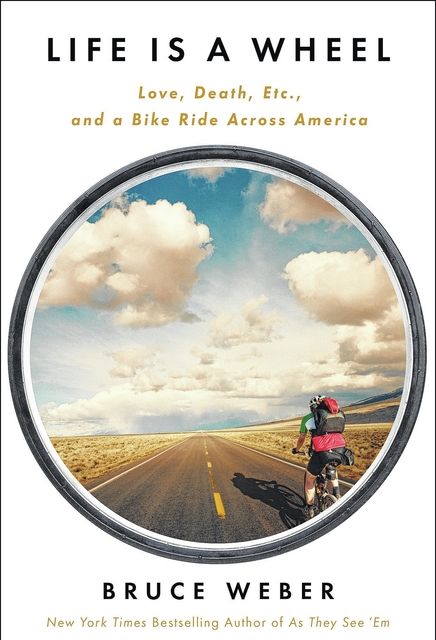Click here to subscribe today or Login.

In the circle that is life, it is often difficult to imagine what would happen if our path diverged. While some of us remain fearful of the unknown, there exist others who embrace the difference. In author, Bruce Weber’s latest work, “Life Is a Wheel: Love, Death, Etc. and a Bike Ride Across America,” readers meet a man well into his mid-life, accepting the challenge ahead.
In 2011, at 57-years-old, Weber traveled across America, cycling over 4,000 miles from Astoria, Oregon to New York City. While his adventures were first published as separate snippets, the travelogue grew to become a connection of narrative adventures, oftentimes revisiting his first major cycling trip nearly 20 years before. Weber’s professional writing skills as a New York Times obituary writer and journalist lend itself to the work. The succinct style follows every sinuous action of Weber’s route from the Pacific to Atlantic Coasts across every stretch of the horizon.
Roaming alone, Weber reflects on the experiences he shares with the many people he meets along the way, demonstrating not only his penchant for curiosity, but also of the world’s. One might question why Weber sought out the journey and what led him to take on such a dubious challenge in the middle of his life. Weber simply replies: “[T]here are two kinds of people, those who understand such a journey and those who don’t.” As one might imagine, Weber, having cycled across America, not once, but twice, demonstrates that while one might take the same route, the journey is never the same.
Three parts separate the work: The West (Part I), American Gulliver (Part II), and The East, Eventually (Part III). There is great symmetry to the work in its symbolism that life, much like Weber’s passage, is a series of cycles alternating like gears from easy to difficult. The travelogue presents in a two-fold manner as Weber takes a three-month journey across America with his head and heart keeping to the pace.
Any cycling enthusiast would enjoy the read, but the adventure is more than that. Every mile of the winding wheel becomes a meditation on life, both a critical and provocative look into the universe and its expectations for us. Weber concludes the work with his second cycling journey now behind him, but reminding us that no matter the road we take, there will always remain a chance for further exploration — “Twice isn’t enough? Maybe not.”





